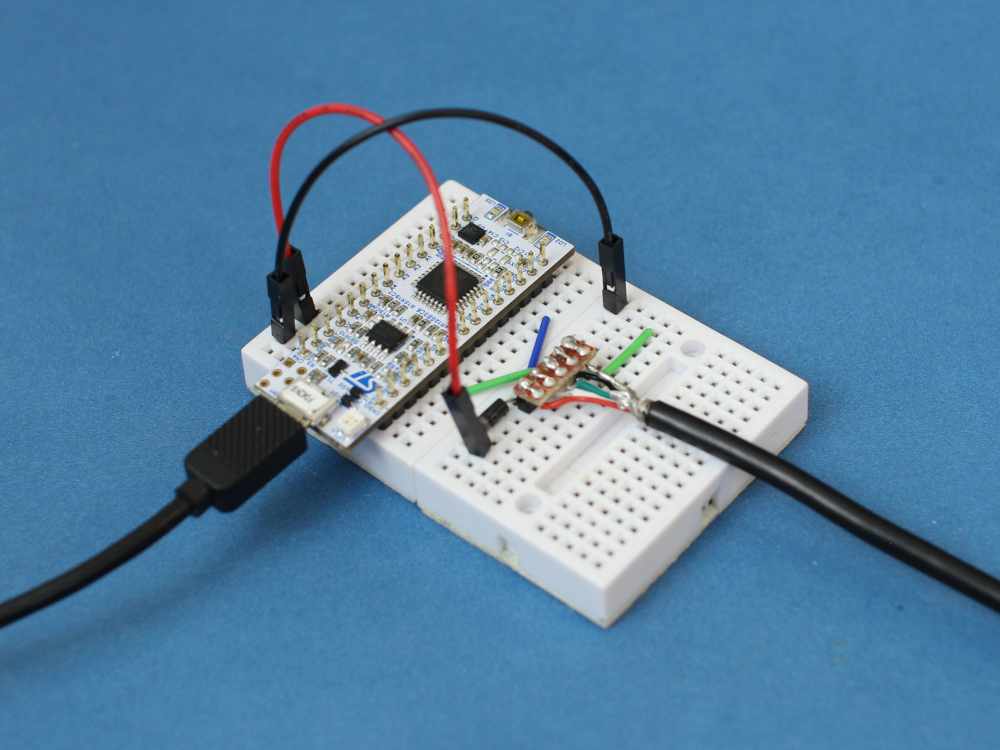

- Ide for stm32 nucleo board install#
- Ide for stm32 nucleo board generator#
- Ide for stm32 nucleo board software#
- Ide for stm32 nucleo board series#
- Ide for stm32 nucleo board download#
(I trust it’s as easy as this to install on Windows, but who knows?)Īlright, you’re good to go - preliminaries finished! Your first projectīefore we can start writing code we need to create a project.
Ide for stm32 nucleo board download#
Download the correct version for your operating system (I grabbed the Debian bundle since I’m running an Ubuntu system).My first impressions are very positive - ST have provided binaries for every platform (yay Debian/Linux).Īnyway, here’s the steps, I’m sure I don’t need to go into detail here: It’s free, although you do have to sign up an account / give them your email address. You can download and install CubeIDE from their website. It includes the necessary drivers, compilers, and the debugger all in a nice eclipse package.

Today I’m going to focus on ST’s own IDE: STM32CubeIDE.
Ide for stm32 nucleo board software#
There are a lot of different software development environments that will work with the STM32 line of microcontrollers. I’ve found Amazon usually has cheaper prices than anyone else, but you can also shop around for a deal that looks good to you.Īlso, while the official ST boards are nice, but you might also be able to find third party ones that are cheaper (although they often come with less documentation / worked examples). Note that these are Amazon referral links. However, as the steps can easily be generalised, you should be able to follow along with almost any other STM32-based development board.įor your convenience these are two purchase links for the dev boards, for the Nucleo-F303RE and the STM32F429I-DISC1. The discovery board is great since it has an integrated LCD screen and a big on-device SDRAM chip, and the nucleo board is neat since it is quite cost effective and has both Arduino-compatible headers as well as its own larger array of I/O to work with.Īs it’s the cheaper board, this tutorial will focus on the NUCLEO-F303RE development board. If you’re looking for a review of these, I like both of them quite a lot.
Ide for stm32 nucleo board series#
Getting started: Choose a development board / platformįirst, before you download and instally anything, make sure you actually have something to program!Īs mentioned, I have two ST dev boards the stm32f4-discovery series STM32F429I-DISC1 and the stm32nucleo series NUCLEO-F303RE, as seen here: I’ve also worked extensively with ST products throughout my academic and industrial career, so I have a bit of institutional knowledge to go along with these dev boards. My other board is the Terasic DE10-Standard, which is none of those things - however, as the DE10-Standard is freaking awesome, I will no doubt blog about it in future. Two of them are made by ST, are quite cheap, and are reasonably friendly to hobbyists and beginners. Sadly, I’m just writing about ST offerings since I currently only own three ARM-based development boards. No, but I wish it was! How does one get into that gig? Seriously, let me know. While my normal ARM programming environment is currently based on Visual Studio Code, for this tutorial blogpost I’m actually going to use the STM32CubeIDE, as it’s free, it was only semi-recently released, and I’m interested in its capabilities - especially with the debugger.ĭebugging for me in the past has been through the nightmare-inducing (but indisputably powerful) command line interface for OpenOCD.

I’ll then show off tools for debugging, something that everybody should know a little about.įinally, I’ll demonstrate the ST-Link’s integrated Virtual COM Port, which is a handy feature built in to my development kit.
Ide for stm32 nucleo board generator#
I’ll walk through project initialisation, introducing the peripheral and clock configuration options, and illustrate the ST CubeMX code generator traps. Well, in this tutorial I’m aiming to de-mystify things a little, targeting the very challenges that I myself faced when I first got started. It can be quite confusing to work out exactly how one should get going - I certainly remember it being so, at any rate! There’s a plethora of available microcontrollers, platforms, development boards, tools, and software.Įveryone seems to have their own opinion on what is best to use, and debates between the available options range in tone from pleasant and insightful to divisive and vitriolic. Getting started with an 32-bit ARM-based microcontroller is always a little daunting. Tutorial stm32 STM32CubeIDE tooling debugging c


 0 kommentar(er)
0 kommentar(er)
